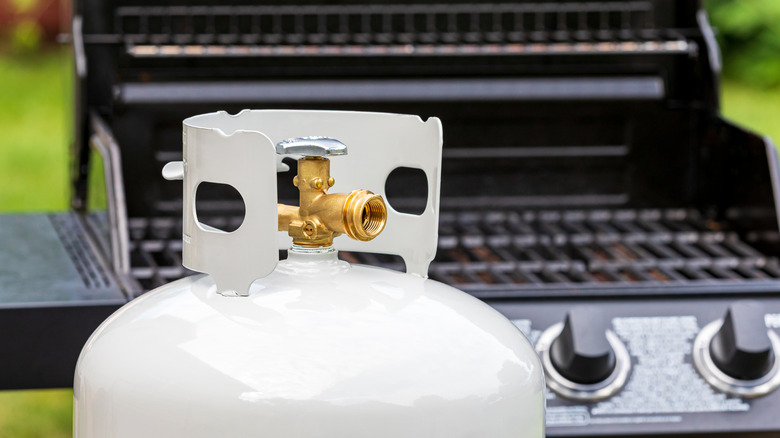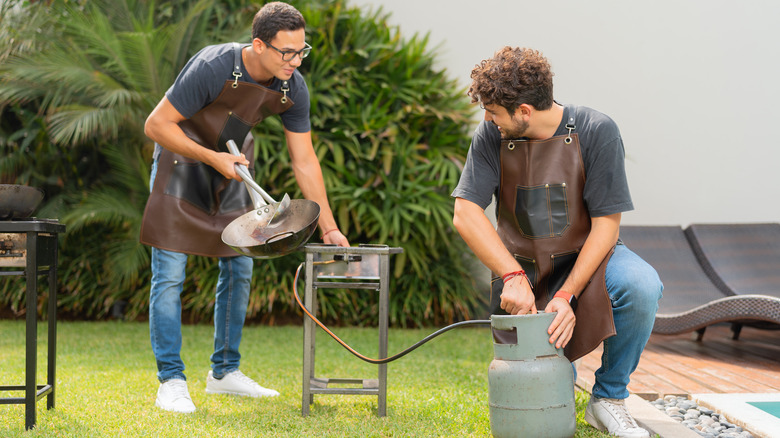The Easy Water Test That Checks Propane Levels In A Pinch
There is nothing more deflating during grill season than carrying a tray of burgers and hot dogs to the grill just to find that the propane is out. Propane tanks don't come with a fuel gauge, which makes it tricky to tell how much gas is left — especially if you haven't used the grill in a while. But there's a surprisingly simple trick (one of the most essential grill tips and tricks) that can help: the hot water test.
Here's how it works: Start by heating some water. It doesn't need to be boiling — hot tap water is usually sufficient — but if it is freshly boiled, handle it carefully. With the propane tank completely turned off and cool to the touch, pour the hot water slowly down the side. Then run your hand down the same side of the tank. The metal will feel warm everywhere there's air, but you'll hit a distinct cool zone where there's still liquid propane inside. Consider that temperature change your DIY fuel gauge. This effect occurs because propane absorbs heat, keeping the metal cooler in the areas it still touches. It's not exact, but it's surprisingly reliable and far more convenient than guessing.
Why this trick works so well
Unlike gasoline (learn the real difference between propane and gas grills here) or oil, propane doesn't slosh around in a way that's easy to see or hear. It stays under pressure, and without a gauge, you're left to guess. But thanks to basic thermodynamics, the hot water test gives you a clear sense of your propane level without needing any special tools. When you pour hot water on the tank's outer wall, the upper (empty) part of the tank warms quickly. The portion still filled with propane, however, stays noticeably cooler because the liquid propane inside absorbs and disperses the heat. That's why the temperature drop is so easy to feel with your hand and why this trick works even if your tank has a protective outer sleeve.
Just make sure the tank is off, the valve is closed, and the grill hasn't been running for a while. You don't want to test on a hot or pressurized tank (that's a grilling mistake that can end in disaster). Used safely, this method is a handy little cheat that helps you avoid mid-burger fuel disasters.

